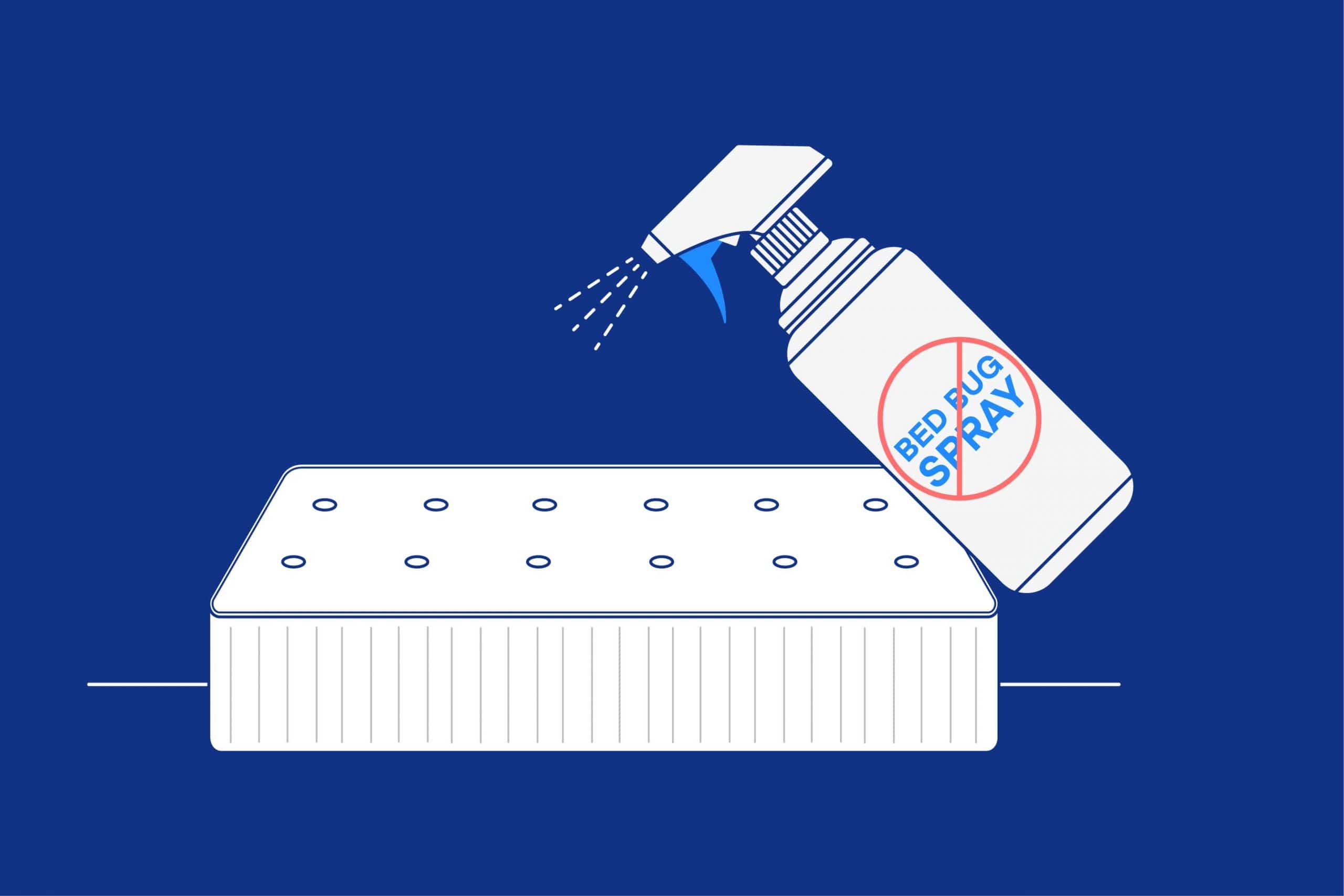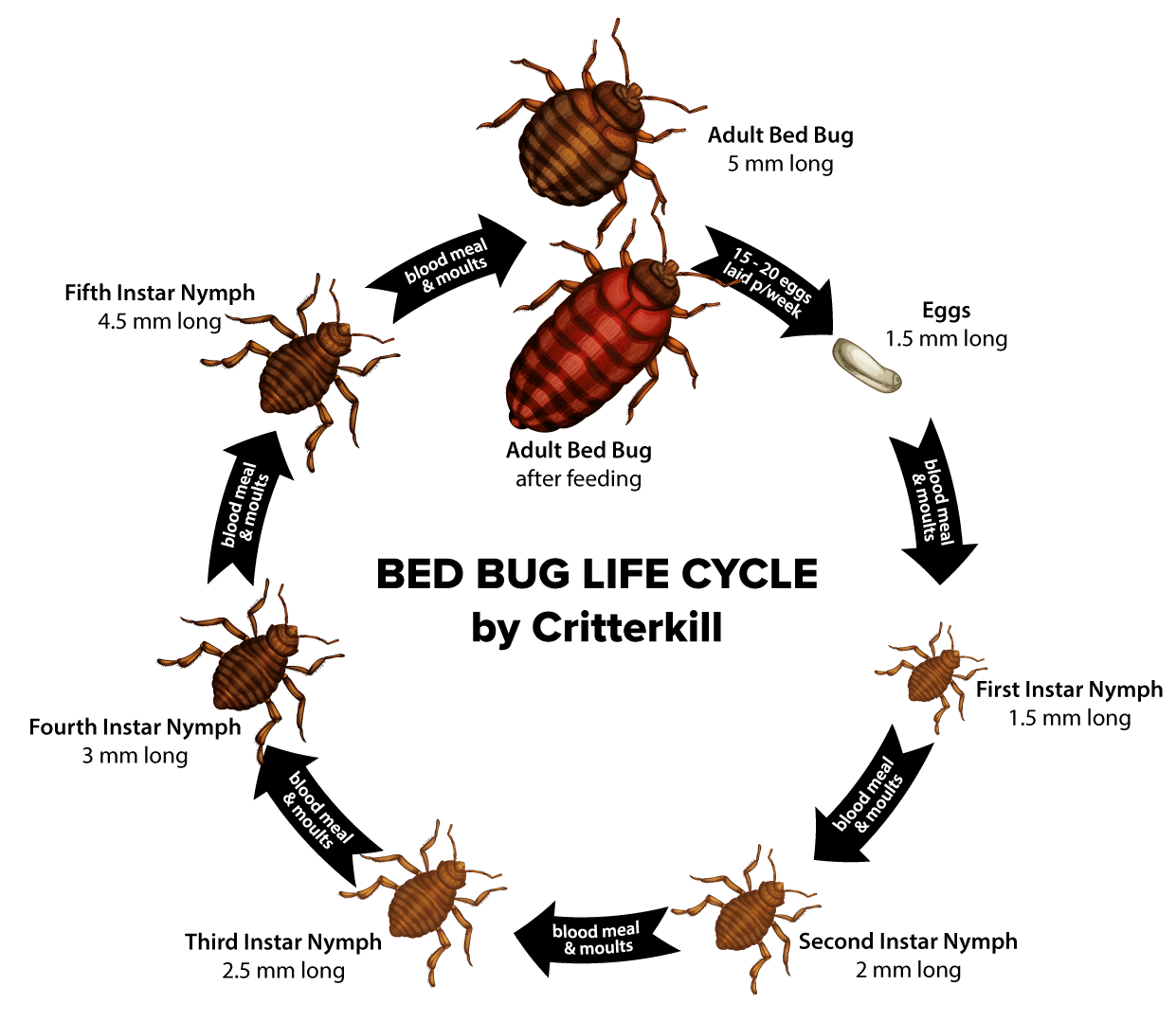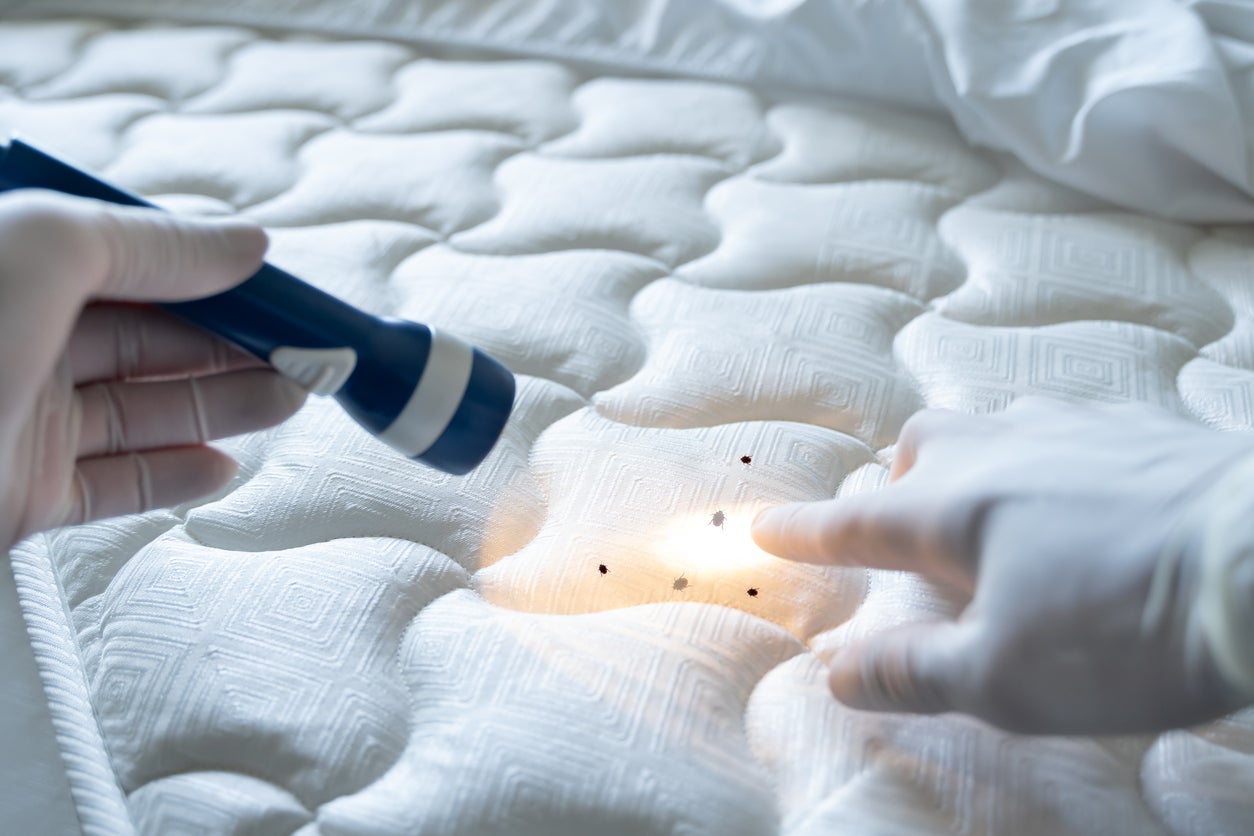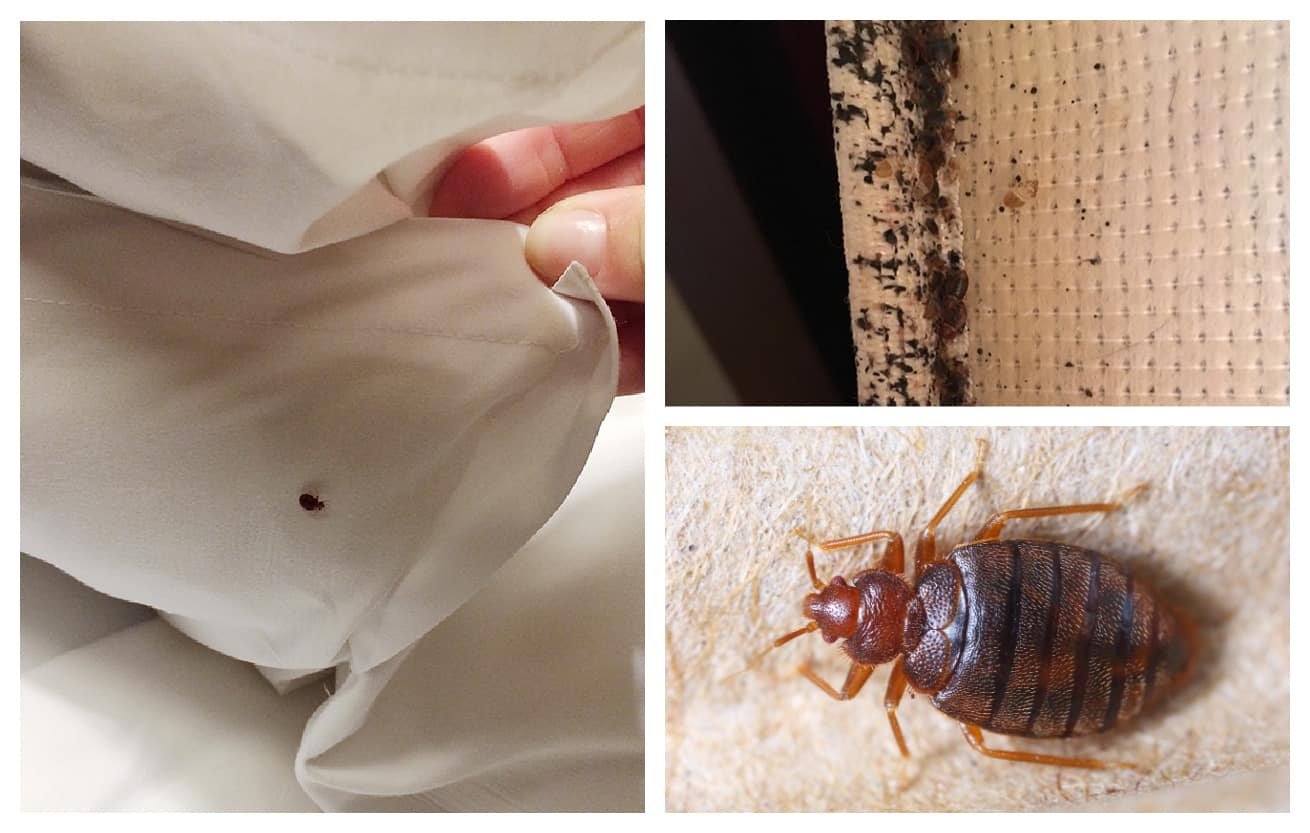To get rid of bed bugs on sheets, immediately wash them in hot water and dry on the highest heat setting. Then, encase your mattress in a bed bug-proof cover to prevent future infestations.
Dealing with bed bugs on your bedding can be a distressing experience. These tiny parasites not only cause discomfort with their itchy bites, but they can also quickly spread throughout your home if not addressed promptly. Understanding the urgency, this guide provides targeted steps to eliminate bed bugs from your sheets effectively.
Remember, tackling the issue head-on with the correct measures can save you from a full-blown infestation. It’s essential to act fast, employ thorough cleaning, and use protective measures to ensure your sleep space becomes a bug-free zone. Let’s dive into the precise actions you need to take to reclaim the comfort of your bed.

Credit: amerisleep.com
The Bed Bug Menace
Imagine closing your eyes for a peaceful night’s sleep only to wake up with itchy red marks. This is the dreaded scenario courtesy of bed bugs, tiny bloodsucking insects that can turn your mattress into their own buffet. These frustrating pests not only infest your sheets but also your peace of mind. Knowing how to effectively deal with bed bugs is imperative to reclaim your bedroom sanctuary.
Identifying Bed Bugs On Your Sheets
Spotting these elusive critters can be tricky. Look for small reddish-brown insects, about the size of an apple seed. They might be flat or balloon-like, depending on when they last fed. Checking your sheets for signs is crucial:
- Small blood stains that look like rust spots
- Tiny black fecal spots or bed bug excrement
- Transparent exoskeletons after molting
- Laid eggs or eggshells which are tiny and pale white
Health Implications Of Bed Bug Bites
Bed bug bites may lead to various health issues:
| Symptom | Details |
|---|---|
| Itching | Often the first reaction; intense and persistent. |
| Rashes | Clusters of red marks; can be a sign of an allergic reaction. |
| Infections | From scratching; can lead to secondary skin infections. |
| Insomnia | Anxiety about being bitten can cause sleep disturbances. |
Consult a doctor if you experience severe reactions, like extreme itchiness or infection signs. Minor bites often are treated with antiseptic creams or oral antihistamines.

Credit: critterkill.co.uk
Initial Steps And Preparations
Bed bugs can turn your bedroom into a nightmare. These tiny pests are notorious for their resilience. Yet, with thorough preparation, you can reclaim your sanctuary. Start with initial steps and preparations to tackle the issue effectively.
Gathering Necessary Supplies
Before entering the battlefield against bed bugs, arm yourself with the right tools. Here’s what you need:
- Vacuum cleaner with a hose attachment
- Laundry detergent suitable for hot water cycles
- Large plastic bags to seal off infested linens
- Steam cleaner for a chemical-free option
- Disposable gloves to avoid direct contact
- Bed bug spray in case of a severe infestation
Stripping The Bed
Remove all sheets, pillowcases, and blankets with care. Do not shake them, as this can spread bed bugs. Place all items directly into plastic bags. Seal them tightly. This prevents bugs from escaping.
| Step | Action | Tip |
|---|---|---|
| 1 | Remove bedding | Use a gentle touch |
| 2 | Bag items | Seal completely |
| 3 | Dispose of vacuum bag | Do it outside |
| 4 | Wash on high heat | At least 60 minutes |
Clean the mattress with a vacuum. Pay close attention to seams and edges. Encase the mattress after cleaning to trap any remaining bugs. It is also smart to vacuum the room thoroughly, including the bed frame.
Now, transport your bagged items to the laundry. Wash everything on the highest heat setting. Bed bugs cannot survive high temperatures. Dry them similarly for at least 60 minutes.
After these steps, your bed is ready for fresh linens. However, ongoing vigilance is key. Keep an eye out for any signs of bed bugs. Fast action keeps these pests at bay.
Washing Techniques
Dealing with bed bugs on sheets can leave anyone sleepless. But with some key washing techniques, you can say goodbye to these pesky critters. Effective laundering goes beyond tossing your sheets in the washer. Heat, detergent, and strategy are critical for success.
Setting The Right Water Temperature
The fight against bed bugs starts with setting the right water temperature. Bed bugs can’t survive in extreme heat. To kill them:
- Use the hottest water setting on your washing machine.
- Check your sheet’s care label to ensure they can handle high temperatures.
Hot water—typically 60°C (140°F) or above—will kill bed bugs.
Choosing Effective Detergents
Selecting the right detergent is just as crucial as the wash temperature. For best results:
- Pick detergents labeled as ‘anti-allergen’ or ‘mite-killing.’
- Opt for formulas with enzymes that break down bed bug shells.
Be sure to measure the correct amount—more is not always better.
Post-wash Care
Imagine crawling into bed, knowing it’s impeccably clean. Your fight against bed bugs doesn’t end with washing. Proper post-wash care for your sheets ensures those pesky bugs don’t return. Let’s secure your sleep by following these simple yet powerful steps.
Drying Sheets Thoroughly
Heat is a bed bug’s worst enemy. After washing, the right drying technique is key. Use the highest heat setting on your dryer. Bed bugs can’t survive in extreme heat. Dryer sheets has a higher chance of repelling bed bugs. Make sure your sheets are bone-dry. Even a little moisture can be a haven for bugs.
- Run the dry cycle for at least 30 minutes on high heat.
- Check sheets are fully dry.
- Repeat the cycle if sheets are even slightly damp.
Ironing For Extra Safety
Smooth out those sheets and bugs with an iron. Ironing kills lingering bed bugs and eggs. Go over every inch of your sheets with a hot iron. Pay close attention to hems and seams. These places love to hide bugs.
| Part of Sheet | Tips |
|---|---|
| Hems | Iron hems on both sides to squash all bugs. |
| Seams | Press seams with a hot iron to kill hidden eggs. |
| Main Surface | Iron in small sections to not miss any spots. |
Remember to let sheets cool completely after ironing. Then, position them back on the bed. Now, enjoy the peace only a clean, bug-free bed can bring.
Deep Cleaning Your Mattress
Bed bugs on sheets signal it’s time for a mattress deep clean. This starts with methodical approaches. Each step plays a crucial role. Let’s dive into the strategies!
Vacuuming Strategies
Vacuum every inch of your mattress meticulously. Here’s how:
- Use a brush attachment to loosen bed bugs and eggs.
- Focus on seams and crevices where bed bugs hide.
- Go over the mattress’ top and flip it to clean the bottom.
- Empty the vacuum outside, directly into a trash bag.
- Seal and discard the bag immediately to prevent reinfestation.
Applying Mattress Encasements
Encasements trap bugs and prevent future problems. Follow these steps:
- Choose a bed bug-proof mattress encasement. It should fit your mattress snugly.
- Install the encasement carefully to avoid tearing.
- Keep the encasement on for atleast one year. This ensures all trapped bugs and eggs die.
- Pair with bed bug interceptors under bed posts. This monitors and stops bed bugs.
Natural Remedies And Solutions
Bed bugs can turn a good night’s sleep into a nightmare. These pesky insects love to lurk in sheets and mattresses. But don’t worry! Natural remedies can help you bid farewell to these unwanted guests. In the fight against bed bugs, nature offers potent solutions. They’re safe for your home and the environment.
Utilizing Essential Oils
Essential oils are not just for relaxation. They can also ward off bed bugs. Peppermint oil packs a punch against these critters. Lavender is not just soothing for you, but a nightmare for bed bugs. Here’s how to use them:
- Mix 10-15 drops of oil with water in a spray bottle.
- Shake well.
- Spray on sheets, focusing on corners and edges.
Repeat the process weekly for the best results. Always patch test to prevent damage to fabrics.
DIY Bed Bug Repellants
Create your DIY bed bug repellant at home. It’s simple and effective. Here’s what you need:
| Ingredient | Amount | Purpose |
|---|---|---|
| Baking Soda | 1/2 cup | Absorbs moisture from bed bugs |
| Diatomaceous Earth | 1/4 cup | Dehydrates bugs |
| Clove Oil | 5 drops | Acts as an insecticide |
Mix these ingredients. Sprinkle the mixture on your sheets and mattress seams. Leave it for a few hours before vacuuming. Use this method weekly for a bed bug-free bed.
Chemical Treatments
Bed bugs in your sheets can turn sweet dreams into nightmares. Chemical treatments can be a powerful solution to this pesky problem. These methods target bed bugs with precision. We show you how to use these tools effectively and safely.
Insecticide Sprays And Powders
Insecticide sprays work fast. They kill bed bugs on contact. Use them on sheets, mattresses, and bed frames. Powders target bed bugs too. They last longer. Dust them in cracks and crevices. Always check the label. Select products registered with the EPA.
- Pyrethrins and Pyrethroids: Common and effective.
- Desiccants: They dry out bed bugs. Safe for humans.
- Neonicotinoids: For resistant bed bugs. Use with care.
- Plant-Oil Based Insecticides: Natural options. Often safe.
Safety Precautions
Chemicals are strong. Your safety is key. Always use gloves and a mask. Keep pets and children away. Follow instructions on the label. Open windows for ventilation. Store chemicals out of reach. Your health and the health of your family must come first.
- Read and follow the product’s instructions carefully.
- Do not spray directly on skin or clothes.
- Avoid using these products around food areas.
- Store securely, away from children and pets.
- Dispose of empty containers properly.

Credit: www.bobvila.com
Preventive Measures
Bed bugs present a challenge many homeowners face. While the focus often falls on eradication, prevention is key. By adopting preventive measures, you can keep your sheets free from these pests. Let’s explore some effective strategies.
Regular Inspection Rituals
Consistent checks are crucial in preventing bed bug infestations.
- Check bed sheets weekly for any signs of bed bugs.
- Examine seams and folds where they like to hide.
- Look for rust-colored stains or tiny eggs.
- Use a magnifying glass and flashlight for better visibility.
- Inspect after traveling to ensure you haven’t brought any home.
Creating An Unfriendly Environment For Bed Bugs
Deter bed bugs by making your bed a hostile place for them.
| Action | Result |
|---|---|
| Use protective encasements for mattresses and pillows. | Blocks access to hiding spots. |
| Vacuum regularly around the bed area. | Removes bed bugs and eggs. |
| Keep sheets clean and clutter-free. | Reduces hiding places. |
| Maintain a cool bedroom temperature. | Hinders bed bug activity. |
| Consider insecticide barriers. | Prevents entry of new bugs. |
Place doubly laundered sheets in sealable bags before storage to keep them safe.
Professional Extermination Services
Waking up with itchy, red bites? You might have bed bugs in your sheets. Bed bugs are resilient pests that require more than home remedies to fully eradicate. When an infestation takes a serious turn, seeking professional extermination services is often the most effective solution to ensure these pests are gone for good.
When To Call The Professionals
Knowing when to call in the experts can save you time and frustration. If you find multiple signs of bed bugs, like shells, feces, or blood spots, it’s time. Also, if you’ve tried DIY remedies without success, professional help is necessary.
- Continuous bites despite clean sheets.
- Spotting bed bugs or their shed skin.
- DIY treatments haven’t worked.
- Bed bug sighting in multiple rooms.
What To Expect From Extermination
A professional exterminator will follow a strategic process to eliminate bed bugs. Their approach often includes:
- Initial assessment of infestation level.
- Customized treatment plan for your home.
- Insecticide application on targeted areas.
- Heat treatment to eliminate bugs in all life stages.
- Follow-up visits to ensure complete eradication.
| Extermination Step | Details |
|---|---|
| Inspection | Detailed check of infested and surrounding areas. |
| Treatment Application | Chemical and non-chemical options based on extent. |
| Heat Treatment | Raising room temperatures to kill bed bugs. |
| Follow-up | Ensuring no bugs are left after initial treatment. |
Ridding your home of these sneaky insects can be tough, but professional exterminators use advanced methods to get the job done. With their expertise, you can expect to have bed bug-free sheets and, most importantly, a peaceful night’s sleep.
Monitoring And Follow-up
The war against bed bugs doesn’t end with one victory; it requires vigilance to ensure the pests are truly gone. Monitoring and follow-up are vital for keeping your sheets and bedding clear of these unwelcome guests. Let’s dive into the ways you can maintain a bug-free sleeping space.
Keeping Bed Bugs At Bay Long-term
A crucial step in keeping your bed bug problems in the past is ongoing diligence. Follow these methods to prevent a new infestation:
- Inspect sheets and mattresses regularly for signs of bed bugs.
- Use protective covers on mattresses and pillows.
- Clean your bed area often, including vacuuming floors and furniture.
- Reduce clutter where bed bugs can hide.
- Consider professional preventative treatments if bed bug exposure is high.
Signs Of A Recurrence
Even after an all-clear, be on the lookout for these indicators that bed bugs might be back:
| Sign | Description |
|---|---|
| New Bite Marks | Unexplained bites appearing overnight. |
| Live Bugs or Shells | Seeing bugs or their shed exoskeletons on sheets. |
| Rusty Stains | Small, dark spots on bedding could be bug droppings. |
| Weird Smell | A musty, sweet odor in your sleeping area. |
Notice any of these signs? Act quickly with cleaning, inspection, and possibly professional help. Consistent monitoring ensures a restful, bug-free sleep for the long term.
Frequently Asked Questions For How To Get Rid Of Bed Bugs On Sheets?
Can High Heat Eliminate Bed Bugs On Sheets?
High heat is effective in killing bed bugs. Wash your sheets at a temperature of at least 120°F (49°C) for 30 minutes. This will eradicate bed bugs and their eggs. Always use the hottest dryer setting post washing.
What Signs Indicate Bed Bugs On Bed Linens?
Look for small, reddish-brown bugs or rust-colored stains. Tiny black spots, which are their fecal matter, or translucent eggs may also be present. These signs typically appear in corners and seams of sheets.
How Often Should Bed Linens Be Washed To Prevent Bed Bugs?
Wash bed linens weekly to minimize bed bug infestations. If you suspect bed bugs, increase the frequency to every 3-4 days. This helps remove any new bugs and hinders their breeding cycle.
Are Bed Bug Sprays Effective On Sheets?
Bed bug sprays can be used effectively on sheets, but they must be specifically labeled for such use. Ensure they are safe for direct application on bedding and always follow the instructions. It’s often best to combine sprays with washing for maximum effectiveness.
Conclusion
Tackling bed bug infestations on sheets can be daunting, yet it’s crucial for a peaceful sleep. Your commitment to cleanliness and persistence with the suggested methods will pay off. Remember, consistent monitoring and preventive strategies are your best defense against future invasions.
Sweet dreams await as you reclaim your bug-free bedding!

I’m MD Tanvir, and I bring years of expertise gained from working closely with pest control companies to the forefront. My journey in the industry has inspired me to launch Bug Battler, a platform aimed at equipping people with the know-how to combat pests autonomously. Through Bug Battler, I aim to empower individuals with practical insights to tackle pest infestations effectively.

